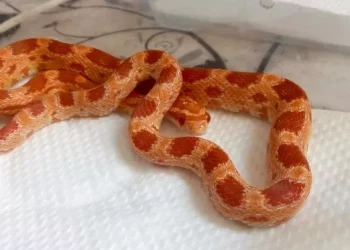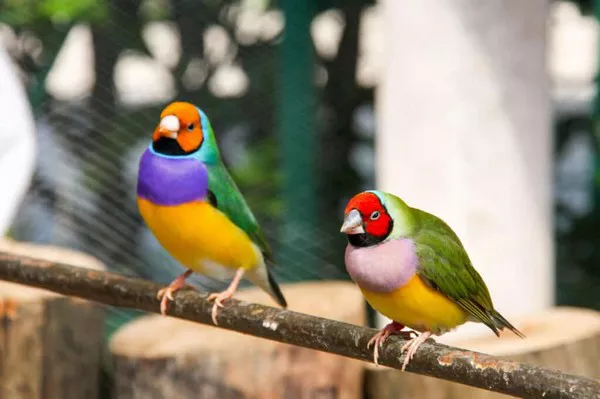Corn snakes (Pantherophis guttatus) are among the most popular pet snakes due to their docile nature, manageable size, and vibrant coloration. As with any pet, providing the right care is crucial for their health and well-being. One important aspect of husbandry that often raises questions is lighting, particularly the use of ultraviolet (UV) light. In this article, we will explore whether corn snakes need UV light, the benefits of UV exposure, and how to create an appropriate environment for your corn snake.
Understanding Corn Snakes
Natural Habitat
Corn snakes are native to the southeastern United States, where they inhabit a range of environments, including forests, fields, and agricultural areas. In the wild, they spend much of their time hiding under logs, in burrows, or among foliage, coming out to hunt and bask in the sun.
Behavior and Physiology
Corn snakes are primarily nocturnal and crepuscular, meaning they are most active during twilight hours. Their physiology is adapted to these habits, with excellent vision and heat-sensing capabilities. Understanding these natural behaviors helps inform how we can best care for them in captivity.
The Role of UV Light in Reptile Health
What is UV Light?
Ultraviolet light is a part of the electromagnetic spectrum that is invisible to the naked eye. It is categorized into three types:
UVA: Affects behavior and appetite, promoting activity and feeding.
UVB: Essential for the synthesis of vitamin D3, which aids in calcium absorption.
UVC: Mostly absorbed by the Earth’s atmosphere and is not typically encountered by reptiles in nature.
Importance of UVB Light for Reptiles
Many reptiles, particularly those that are diurnal (active during the day), rely on UVB light for crucial physiological processes. UVB exposure allows reptiles to synthesize vitamin D3, which is vital for calcium metabolism. A deficiency in calcium can lead to serious health issues, such as metabolic bone disease (MBD).
Do Corn Snakes Need UV Light?
Natural UV Exposure
In their natural habitat, corn snakes may occasionally bask in sunlight. However, they are primarily nocturnal and spend most of their time hidden from direct sunlight. Unlike diurnal reptiles, they do not require UVB light for essential biological functions.
Current Research
Research indicates that snakes, including corn snakes, can absorb vitamin D through their diet rather than through UVB exposure. Corn snakes primarily obtain vitamin D from the small mammals and birds they consume in the wild. This means that, in captivity, a well-balanced diet can provide the necessary nutrients without the need for UV light.
Expert Opinions
Veterinarians and reptile experts generally agree that corn snakes do not require UVB lighting to thrive. However, some keepers opt to use UVB lights to enhance the overall environment and mimic a more natural habitat. The choice to use UVB can depend on various factors, including the individual snake‘s health and the specific setup of the habitat.
Benefits of Providing UVB Light
While corn snakes do not need UVB light for metabolic processes, there are potential benefits to providing it:
Enhanced Activity and Feeding
Some keepers report that snakes exposed to UVB light may exhibit increased activity levels and more regular feeding behaviors. This could be due to the stimulating effects of the light, mimicking natural conditions and encouraging more natural behaviors.
Behavioral Enrichment
Providing a UVB light can enhance the environmental complexity of the snake’s habitat, making it more engaging and stimulating. This enrichment can promote healthier behaviors and improve the overall quality of life for the snake.
Potential for Broader Health Benefits
While not strictly necessary, the presence of UVB light can provide some general health benefits, such as improved mood and activity levels. Ensuring that your corn snake has a well-lit environment can create a more balanced habitat.
Creating an Appropriate Environment for Corn Snakes
Lighting Setup
If you choose to provide UVB light for your corn snake, consider the following tips for setting up the lighting:
Choosing the Right UVB Light
Type of Bulb: UVB bulbs come in various types, including fluorescent tubes, compact bulbs, and mercury vapor bulbs. Fluorescent tubes are often recommended for snake enclosures due to their even distribution of light.
UVB Output: Look for bulbs that emit UVB in the range of 2.0 to 10.0. A lower output (e.g., 2.0) is suitable for snakes that do not require high levels of UVB.
See Also: How Long Do Corn Snakes Live as Pets?
Placement of the UVB Light
Distance: UVB lights should be placed at a distance specified by the manufacturer. Typically, the recommended distance is 12-18 inches from the basking area to ensure the snake receives adequate exposure without being harmed by excessive heat.
Basking Area: Create a designated basking area where the snake can absorb the UVB light. This area should also have a heat source, as corn snakes benefit from a temperature gradient in their enclosure.
Temperature and Humidity
In addition to lighting, maintaining proper temperature and humidity levels is crucial for the health of your corn snake:
Temperature Gradient: Provide a temperature gradient with a warm side (85-90°F) and a cooler side (70-75°F) to allow your snake to thermoregulate effectively.
Humidity: Corn snakes thrive in moderate humidity levels, typically around 40-60%. Monitor humidity with a hygrometer and provide a shallow water dish to help maintain moisture.
Enclosure Setup
Creating an enriching habitat for your corn snake involves more than just lighting. Consider the following components:
Hiding Spots: Offer multiple hiding spots using commercially available hides or natural materials. Hiding spots reduce stress and provide security.
Substrate: Choose a suitable substrate, such as aspen shavings, cypress mulch, or paper towels. Avoid cedar and pine shavings, which can be harmful to reptiles.
Climbing Opportunities: Incorporate branches or climbing structures to encourage natural behaviors.
Dietary Considerations
While UVB lighting may not be essential, ensuring your corn snake has a balanced diet is critical for its health:
Prey Selection
Corn snakes primarily eat rodents in captivity. Options include:
Mice: Feed appropriately sized mice according to your snake’s age and size.
Rats: As corn snakes grow, rats can become a suitable prey choice.
Supplementing Diet: Consider offering pre-killed prey to reduce risks associated with live feeding.
Nutritional Balance
Make sure the prey you provide is nutritionally balanced. If you’re breeding your own rodents, ensure they are fed a high-quality diet to maintain nutritional value.
Monitoring Health and Behavior
Regular Health Checks
Monitor your corn snake for signs of health issues, such as:
Weight Loss: Regularly weigh your snake to ensure it maintains a healthy weight.
Abnormal Behavior: Look for changes in feeding habits or lethargy, which could indicate health problems.
Consulting a Veterinarian
Regular check-ups with a veterinarian experienced in reptile care can help ensure your corn snake remains healthy. Discuss diet, lighting, and any behavioral changes that may arise.
Conclusion
While corn snakes do not require UV light for metabolic processes like some other reptiles, there are potential benefits to providing UVB lighting in their enclosures. By creating an enriching and well-lit environment, you can encourage natural behaviors and improve your corn snake’s overall well-being.
Ultimately, the decision to use UV light should be based on your specific setup and the individual needs of your snake. Always prioritize proper husbandry practices, including diet, temperature, and humidity, to ensure a healthy and happy corn snake.
By understanding your corn snake’s needs and providing an appropriate environment, you can foster a thriving relationship with your pet, ensuring they lead a long, healthy, and active life.
Related Topics:


























